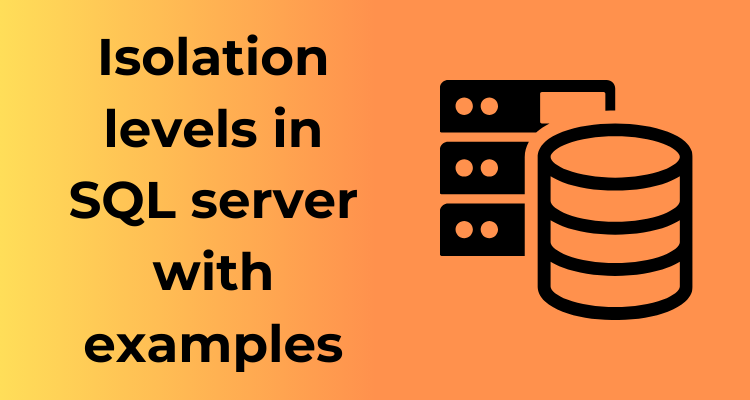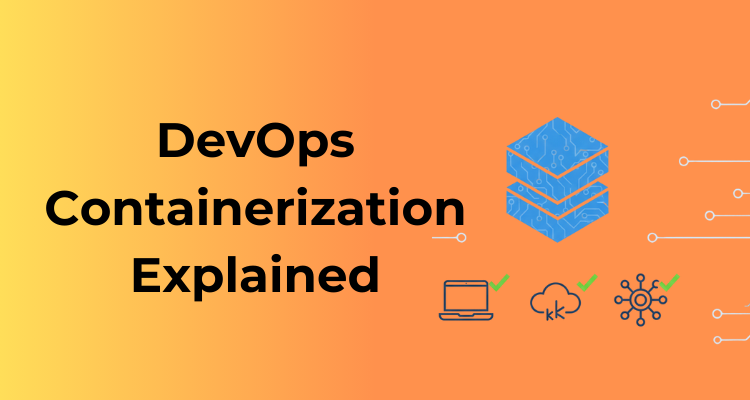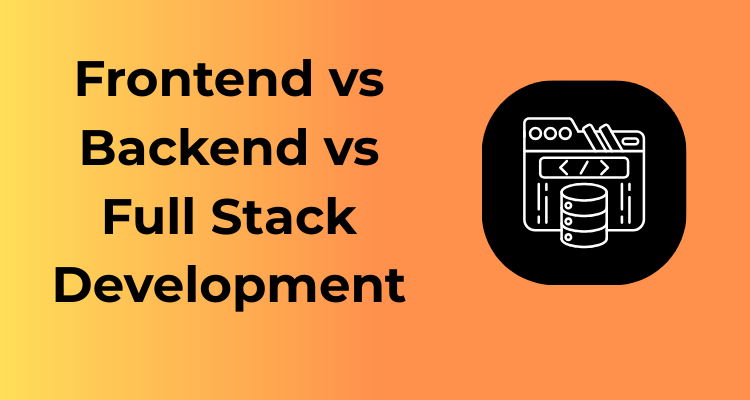Hello there! Let’s dive into the intriguing world of database transactions and isolation, a cornerstone of SQL Server’s functionality. Whether you’re a seasoned database professional or just starting out, it’s exciting to explore the mechanisms ensuring our data stays accurate, consistent, and secure.
What Are Database Transactions?
At its core, a transaction is a way to group a series of database operations into a single, inseparable unit of work. Think of it like completing a checklist of interdependent tasks. Either every task is completed successfully (commit the transaction), or none of them are (rollback the transaction). Pretty neat, right?
For example, imagine you’re transferring money between two bank accounts. You deduct an amount from Account A and add it to Account B. If something goes wrong after deducting from Account A, you don’t want that amount to disappear into thin air—hence, the power of a transaction to ensure this process happens smoothly.
What Is Isolation?
Isolation is one of the core principles that safeguard transactions. Picture this: you have multiple users accessing and modifying data concurrently (a super common occurrence, btw). Without isolation, users could end up seeing uncommitted changes, causing messy issues like double payments or incomplete data.
Here’s where isolation in database systems comes to the rescue, essentially acting as a referee. It ensures each transaction runs as though it’s the only one operating on the database. Sounds important, doesn’t it?
Why Is This Such a Big Deal?
When you allow transactions to overlap without proper isolation, chaos can ensue. Let me walk you through some common pitfalls:
- Dirty Reads: Imagine reading data that hasn’t been committed yet. It’s like reading the rough draft of a document—before it’s finalized, things could change.
- Non-Repeatable Reads: You might read the same data twice during a transaction and find that it’s changed in between. Imagine buying concert tickets, and the price changes just as you’ve hit “Confirm”. Frustrating, right?
- Phantom Reads: Even worse, new rows could suddenly appear or disappear partway through your transaction.
These issues highlight why proper isolation is essential—keeping transactional operations predictable, consistent, and user-friendly.
The Balancing Act: Isolation vs. Concurrency
It’s not all black and white, though. Higher isolation levels mean fewer concurrency issues but can also slow down performance since transactions may need to wait their turn. So, it’s a balancing act depending on your application’s needs. Are you building a high-speed application where throughput is king? Or is data consistency a non-negotiable priority?
This dance between maintaining data sanctity and keeping transactions efficient is what makes mastering isolation levels such an exciting challenge for SQL enthusiasts.
ACID Properties and Their Role in Enforcing Isolation Levels
Let’s dive into one of my favorite topics: the ACID properties! If you’ve spent any time around databases, or even just dipped your toes into learning SQL Server, you’ve probably heard this term thrown around. But what exactly are ACID properties? Why do they matter? And how do they tie into those enigmatic “isolation levels” we hear so much about? Well, let’s unpack this together in a way that makes it both easy to understand and fun to explore!
What Are ACID Properties?
ACID is an acronym that stands for:
- Atomicity
- Consistency
- Isolation
- Durability
Each of these properties plays a crucial role in ensuring that your database transactions behave as expected. They work together like a stellar band, harmonizing to keep your data secure, accurate, and reliably handled. Alright, but what does each of these mean, and how does it all fit into isolation levels? Let’s break it down.
1. Atomicity
Atomicity ensures that a transaction is an “all or nothing” action. Either every operation within the transaction completes successfully, or none of them does. This prevents your database from ending up in an inconsistent state if something goes awry during a transaction. Imagine you’re transferring money from one bank account to another. If the debit happens, but the credit doesn’t, well, that would be a messy situation, wouldn’t it? Atomicity makes sure that’s a no-go.
2. Consistency
Consistency is about ensuring that a transaction brings your database from one valid state to another. It’s like a guardrail that enforces the rules and constraints you’ve set up — ensuring data integrity throughout the process. For instance, if you have constraints that require all customer ages to be positive numbers (no negative five-year-olds running wild in the system!), consistency ensures that every transaction obeys those rules.
3. Isolation
This one is our MVP when talking about isolation levels! Isolation means that transactions occurring simultaneously don’t end up interfering with each other. It’s all about boundaries — think of it as giving each transaction its own private workspace to avoid stepping on others’ toes. SQL Server’s isolation levels specifically define how strict these boundaries are. For example, should one transaction be able to read uncommitted changes made by another transaction? Isolation levels help us answer these questions.
4. Durability
Durability is the promise that, once a transaction is truly committed, it will remain committed. Even if there’s a power outage or the server suddenly crashes, your data is safe and sound. SQL Server achieves this by writing transaction details to a log, ensuring recovery mechanisms are in place for the worst-case scenarios.
The Role of ACID in Isolation Levels
So, how do these properties influence our isolation levels? Well, isolation, as you’d guess, takes center stage here. The different SQL Server isolation levels — like READ UNCOMMITTED, READ COMMITTED, REPEATABLE READ, and more — exist to offer flexibility around how strictly SQL Server enforces that great divide between transactions. However, the level you choose can influence other ACID properties, like consistency and even durability in some edge cases.
Balancing these properties is key. Too much strictness in isolation might slow down performance (more locking and waiting), while relaxed isolation might lead to inconsistent or “dirty” reads. Understanding the nuances of ACID will help you choose the right level based on your specific needs.
Breaking Down SQL Server Isolation Levels Step By Step
Let’s dive into the intriguing world of SQL Server isolation levels together! Understanding these levels might seem daunting at first, but don’t worry—I’ll guide you step by step. By the end, you’ll be confidently navigating through these concepts like a pro!
What Are Isolation Levels?
At its core, isolation levels control how transactions interact with each other in SQL Server. When multiple transactions access a database simultaneously, things can get tricky—imagine one person reading outdated data or another modifying data at the exact same time! Isolation levels help maintain database integrity while balancing performance.
Think of isolation levels as the “rules of engagement” for transactions. They define how data is read and written to avoid issues like dirty reads, non-repeatable reads, and phantom reads. Still with me? Great! Now let’s break it down.
The Five SQL Server Isolation Levels
SQL Server provides five distinct isolation levels, each with varying degrees of strictness. Let’s walk through them in ascending order of isolation—and yes, we’ll sprinkle in relatable examples!
- Read Uncommitted:Also called the “anything-goes” level. Here, transactions can read data that hasn’t been committed yet—this means you could see unfinalized changes. While it’s the fastest level, it opens the door to dirty reads. Imagine glancing at a bakery’s sales data before they’ve even totaled it up—you’re likely to get an incomplete (or inaccurate) picture.
- Read Committed (Default):This is the SQL Server default. Transactions wait until others complete their write operations before reading data. By doing so, it avoids dirty reads, but you might encounter non-repeatable reads (where the same query gives different results if data is modified mid-transaction).
- Repeatable Read:Upping the game on consistency! In this level, once you read a piece of data, no one can modify it until your transaction is done. It prevents dirty and non-repeatable reads but doesn’t protect against phantom reads—think of those pesky rows that seem to “appear” if someone inserts new entries while you’re working.
- Serializable:The strictest level! Serializable ensures your transaction operates as if it’s the only action happening on the database. It prevents dirty reads, non-repeatable reads, and phantom reads—BUT it can seriously impact performance. Imagine basically locking the whole library while you research one page!
- Snapshot:This one’s a bit different—it works by giving each transaction a “snapshot” of the database at a specific moment. Even if other users change data, your transaction won’t notice. It’s ideal for folks who need everything “frozen in time,” but setting it up can be resource-intensive.
When to Use Each Isolation Level: Scenarios and Trade-offs

Ah, the art of choosing the right isolation level! It’s not just about picking randomly; it’s about balancing performance, consistency, and concurrency to suit your application’s needs. Let’s buckle up and explore when to use each isolation level and the trade-offs they bring to the table.
Read Uncommitted: Embracing the Chaos
Think of Read Uncommitted as the “wild child” of isolation levels. It allows you to read data without any restrictions—yes, even if it hasn’t been committed yet! This means it’s prone to dirty reads. While this may sound risky (and it can be), it serves a purpose.
- Great for: Scenarios where performance is a top priority and the consequences of reading uncommitted data are minimal. Think of analytics dashboards or reporting where exact accuracy isn’t critical.
- Trade-offs: Accuracy can take a hit, so don’t use this in transactional or financial applications where consistency is a must.
Read Committed: The Safe Default
This is like the “middle ground” in isolation levels—safe, practical, and often the default in SQL Server. Read Committed ensures that you only read committed data, thus avoiding those pesky dirty reads.
- Great for: Applications where you need a decent balance of consistency and performance, like standard CRUD (Create, Read, Update, Delete) operations in business applications.
- Trade-offs: It’s not immune to issues like non-repeatable reads or phantom reads, which makes it less ideal for highly critical transactions.
Repeatable Read: Lock It Up!
Repeatable Read is the version of isolation that says, “Hey, I promise your data won’t change during the transaction.” It prevents both dirty reads and non-repeatable reads, keeping things consistent within a transaction.
- Great for: Processes where the same data gets read multiple times and consistency is crucial, like inventory management or banking applications.
- Trade-offs: Locks are held longer, which could impact performance in systems with high concurrency.
Serializable: Total Control
Serializable is like the overprotective parent of isolation levels. It prevents dirty reads, non-repeatable reads, and even phantom reads by treating the transaction as if it has exclusive, serial access to the data.
- Great for: Scenarios where absolute precision is non-negotiable, such as financial audits or booking systems requiring no room for error.
- Trade-offs: This level comes with a performance hit, as it heavily locks resources, potentially leading to higher contention and deadlocks.
Snapshot: The Best of Both Worlds?
Snapshot isolation is a crowd-pleaser. It uses row-versioning to let transactions read a snapshot of the data as it was when the transaction began, reducing locking and avoiding dirty reads, non-repeatable reads, and phantom reads!
- Great for: High-read environments with occasional updates, where locking could slow things down, like complex reporting systems or lightly transactional applications.
- Trade-offs: It requires extra storage for maintaining row versions and may become challenging in write-heavy environments.
Tips for Choosing Wisely
Here’s the golden rule: Understand your application’s requirements. If your application cares about speed over accuracy, lean towards looser isolation levels like Read Uncommitted. But if data integrity is king, opt for stricter levels like Serializable or Repeatable Read.
Also, don’t forget to consider your system’s concurrency and workload. Happily find the sweet spot where performance and data accuracy coexist harmoniously!
Handling Deadlocks: How Isolation Levels Affect Concurrency
Ah, deadlocks – the bane of many database administrators’ and developers’ lives! They can bring your beautifully crafted SQL Server processes to an abrupt halt, sometimes feeling like an unsolvable maze. But don’t worry, understanding how isolation levels influence deadlocks and concurrency will arm you with tools to navigate this challenge effectively.
What Are Deadlocks, and Why Should You Care?
Let’s start with the basics. A deadlock happens in SQL Server when two or more processes are waiting for each other’s resources to complete. Picture this: Process A is holding onto Resource 1 and waiting for Resource 2, while Process B is holding onto Resource 2 and waiting for Resource 1. Neither can proceed, and voilà – you’ve got yourself a deadlock!
In a world where smooth data access is critical, deadlocks are a big deal. They can lead to decreased application performance, frustrated users, and unhappy stakeholders. But here’s the good news: you can mitigate deadlocks by carefully choosing and managing your isolation levels. Let’s break it down!
How Isolation Levels Influence Deadlocks
Isolation levels are a key player in the deadlock drama because they dictate how data is accessed and locked in SQL Server. Here’s a quick breakdown of how the main isolation levels impact concurrency and deadlocks:
- Read Uncommitted: This level doesn’t place any locks, which means it won’t cause deadlocks. Sounds great, right? Not so fast. The downside is that it allows dirty reads – your process might access uncommitted data, which can lead to incorrect results.
- Read Committed: The default isolation level for SQL Server. It places shared locks on read operations but releases them as soon as the read is complete. While it minimizes deadlocks compared to higher isolation levels, they can still occur in write-heavy environments.
- Repeatable Read: This level keeps locks on read data until the transaction completes. This reduces the risk of data changes during reads but increases the potential for deadlocks since locks are held for longer durations.
- Serializable: The most restrictive level, Serializable locks an entire range of data, making deadlocks more likely due to the greater number of locks it needs for transactions. However, this also ensures the highest level of isolation.
- Snapshot: Unlike the others, Snapshot isolation uses versioning instead of locking to provide a deadlock-free experience. Each transaction gets its version of the data, reducing interference and enhancing concurrency.
Strategies for Managing Deadlocks
To reduce deadlocks while maintaining concurrency, combine thoughtful isolation level choices with proactive strategies. Here is a handy checklist to guide you:
- Minimize Locking Duration: Write efficient queries that limit the time locks are held to reduce contention.
- Consider Using Snapshot Isolation: Switching to Snapshot isolation can eliminate many deadlocks by avoiding the locks altogether. Keep in mind the memory overhead, though.
- Access Resources in a Consistent Order: Designing processes to request resources in the same order prevents circular waits – one of the main causes of deadlocks.
- Use Deadlock Retry Logic: When deadlocks do occur, SQL Server resolves them by terminating one process. Adding retry logic in your application ensures failed transactions can attempt again without user disruption.
- Monitor with SQL Server Tools: Use tools like SQL Server Profiler or Extended Events to detect and analyze deadlocks, giving you insights to optimize your processes further.
Practical Examples: SQL Queries for Understanding Isolation Levels
Let’s dive right into the fun part—getting our hands a little dirty with some SQL queries to better understand isolation levels! Whether you’re a seasoned SQL user or just starting, examples can make abstract concepts crystal clear for everyone. So, fire up SQL Server and follow along for a deeper understanding of how isolation levels work in action.
1. Setting the Stage: A Sample Table
We’ll first create a simple table to work with. This example assumes a basic understanding of SQL statements, but don’t worry—I’ll guide you every step of the way!
CREATE TABLE Products (
ProductID INT PRIMARY KEY,
ProductName NVARCHAR(50),
Stock INT
);
INSERT INTO Products (ProductID, ProductName, Stock)
VALUES
(1, 'Laptop', 10),
(2, 'Smartphone', 25);
Now we’ve created a “Products” table with two rows of sample data. Keep this handy as we walk through the examples!
2. Reading with the READ UNCOMMITTED Isolation Level
The READ UNCOMMITTED level allows queries to access rows that might still be in a transaction. Essentially, it lets you read “dirty data.”
- Open two SQL sessions (tabs).
- In the first session, start a transaction and don’t commit it:
BEGIN TRANSACTION; UPDATE Products SET Stock = 5 WHERE ProductID = 1; -- The transaction is still open; don't commit or rollback yet
Now, in the second session, set the isolation level to READ UNCOMMITTED and try querying:
SET TRANSACTION ISOLATION LEVEL READ UNCOMMITTED; SELECT * FROM Products;
You’ll see the updated value for the “Laptop” stock (5) even though the transaction from the first session hasn’t been committed yet. That’s what “dirty reads” look like.
3. Blocking with the REPEATABLE READ Isolation Level
With REPEATABLE READ, SQL Server ensures that if you read a row, no one can update or delete that row until your transaction is complete.
- In the first session, set the isolation level and start a transaction:
SET TRANSACTION ISOLATION LEVEL REPEATABLE READ; BEGIN TRANSACTION; SELECT * FROM Products WHERE ProductID = 2; -- Don't commit or rollback yet
Next, in the second session, try to update the same row:
UPDATE Products SET Stock = 30 WHERE ProductID = 2;
This update will be blocked because the first session has locked the row for its repeatable read transaction. Pretty neat how this prevents inconsistencies!
4. Solving Phantom Reads with SERIALIZABLE
The SERIALIZABLE isolation level protects against phantom reads by also locking new rows that match a query’s condition.
Here’s a scenario:
SET TRANSACTION ISOLATION LEVEL SERIALIZABLE; BEGIN TRANSACTION; SELECT * FROM Products WHERE ProductID = 3; -- Rows are locked even for new Product entries into ProductID = 3 range
If another session attempts to insert a new product with ProductID = 3, that insert will be blocked until the first transaction ends. This guarantees no surprises in your result set.
Common Issues and Debugging Tips with SQL Server Isolation Levels

Dealing with SQL Server isolation levels can sometimes feel like unraveling a tangled web. Misconfigurations, unoptimized queries, or misunderstandings can lead to pitfalls that may cause significant headaches for database administrators and developers alike. Let’s explore some of the common issues and the best strategies to debug them effectively in an engaging and (dare I say) fun way!
Common Issues with Isolation Levels
Like all things in the database world, isolation levels often have their quirks. Here are some problems you might encounter:
- Dirty reads: If the isolation level is set too low (such as
READ UNCOMMITTED), you might end up reading uncommitted or “dirty” data. This could lead to inconsistencies in your queries. - Phantom reads: At lower isolation levels like
READ COMMITTED, rows that match your query criteria might suddenly appear or “vanish” with certain database operations. Spooky, right? - Blocking transactions: Higher isolation levels, while safer, might cause blocking issues because transactions need to acquire and hold locks longer. This could bottleneck performance.
- Deadlocks: This classic issue arises when two or more queries lock resources in such a way that none of them can proceed. While isolation levels don’t always cause deadlocks, improper usage can make them worse.
Debugging Tips and Tricks
If you’re running into isolation level issues, don’t panic! Debugging SQL Server can be a straightforward process with the right tools and mindset. Here’s how to tackle it:
- Check the Current Isolation Level
The first step is knowing what you’re dealing with. Use the T-SQL command:DBCC USEROPTIONSThis will show you the current session’s isolation level. Make sure it’s set to what you intended!
- Examine Locks
If you suspect locks are causing trouble, use SQL Server Dynamic Management Views (DMVs) like:SELECT * FROM sys.dm_tran_locks;This query will help you see which resources are locked and by which transactions.
- Enable Trace Flags
For deadlocks, enable trace flags (e.g.,Trace Flag 1222) to gather detailed deadlock information. Once enabled, SQL Server will log the deadlock graphs to help you pinpoint the issue. - Use SQL Server Profiler or Extended Events
These tools are lifesavers for tracking down problem queries. Set up a session to capture slow procedures, high-lock waits, or isolation-related errors. - Test with Different Isolation Levels
Experiment by tweaking isolation levels to identify trade-offs. For instance:SET TRANSACTION ISOLATION LEVEL READ COMMITTED; -- Your Query Here ROLLBACK TRANSACTION;You can simulate issues and observe how locking or data visibility changes.
Pro Tips for Avoiding Isolation Level Troubles
Avoiding problems is often better than fixing them. Here are a few golden nuggets of advice:
- Use proper indexing: A well-indexed database can reduce the likelihood of blocking and deadlocks.
- Favor optimistic concurrency: Techniques like row versioning (
SNAPSHOTisolation) can help avoid locks altogether for read-heavy systems. - Break down big transactions: Smaller transactions are less likely to interfere with other processes and produce better concurrency.
- Monitor and tune regularly: Database performance is a moving target. Regular maintenance is key.


















